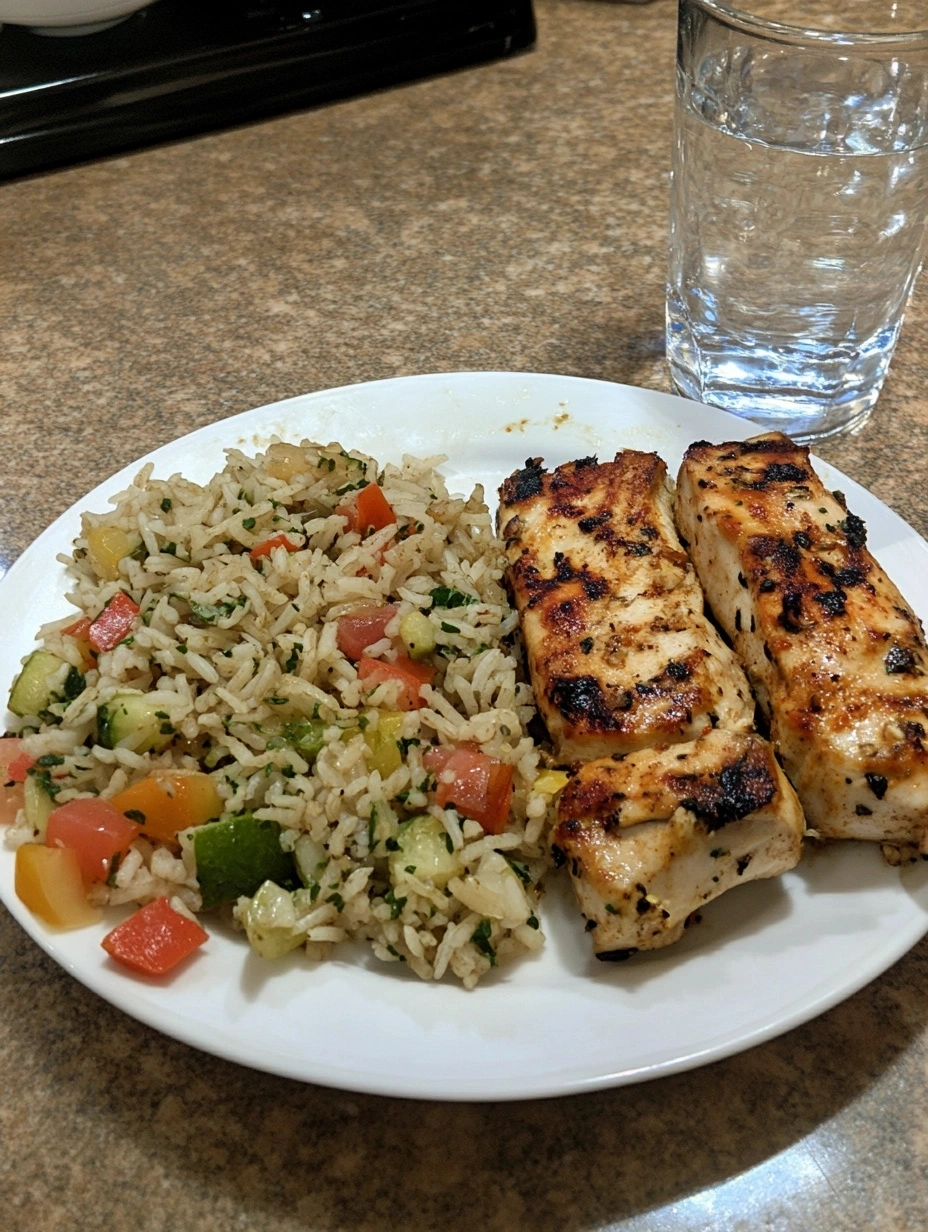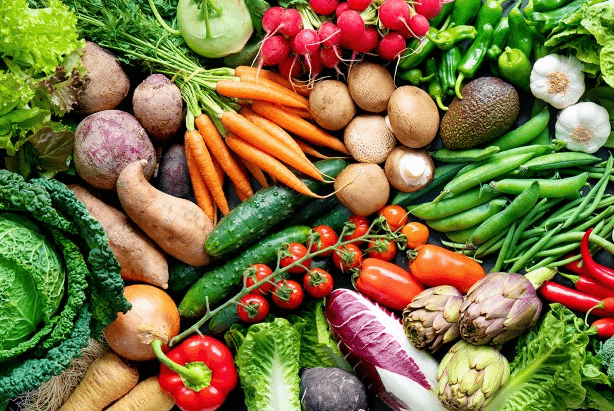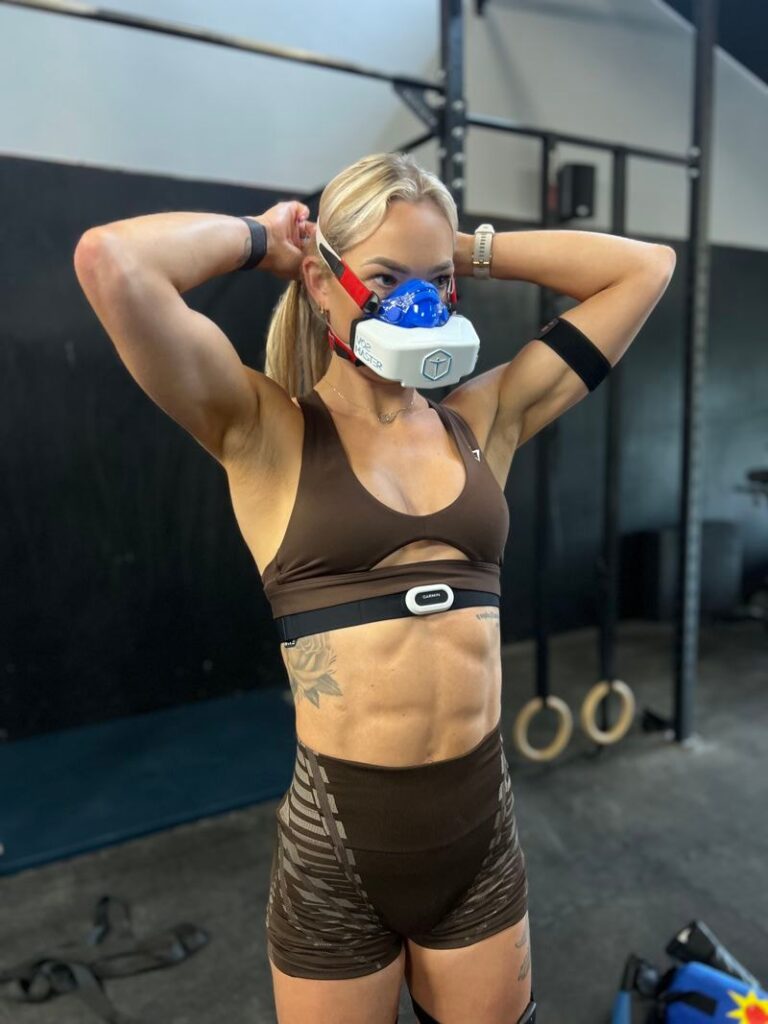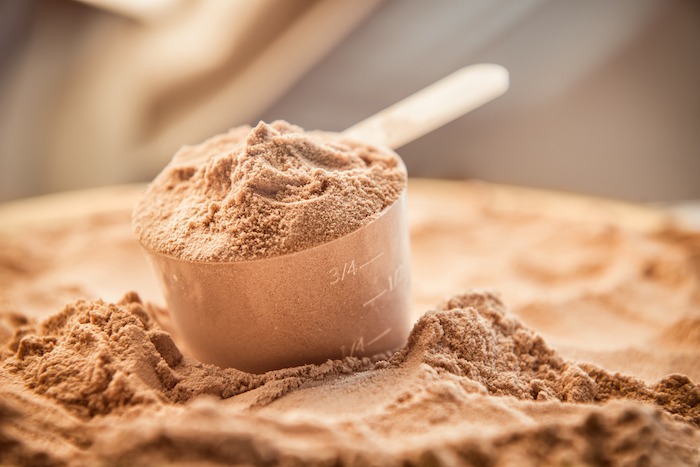Promoting Healthy Eating Alongside Fitness for Over 50s: Your Complete Guide to Active Aging
After 50, your body doesn’t come with an instruction manual…
After 50, your body doesn’t come with an instruction manual for navigating the changing landscape of metabolism, muscle mass, and energy levels. Yet contrary to popular belief, this life stage doesn’t signal an inevitable decline in health and vitality. Research consistently shows that promoting healthy eating alongside fitness for over 50s creates a powerful synergy that can dramatically improve quality of life, reduce chronic disease risk, and support healthy aging.
The key lies in understanding how your nutritional needs evolve as you age and how to strategically fuel your body for optimal performance during physical activity. When you eat healthy foods and maintain an active lifestyle, you’re not just maintaining your current health—you’re investing in decades of vibrant living ahead.
Key Takeaways
- Combining proper nutrition with regular physical activity is essential for healthy aging after 50
- Protein needs increase to 0.5-0.9g per pound of body weight to maintain muscle mass and support exercise recovery
- Focus on nutrient dense foods while reducing calories to match slower metabolism
- Strength training paired with adequate calcium and vitamin d intake helps prevent bone loss
- Hydration becomes more critical during exercise as kidney function and thirst sensation decline with age
- Planning meals around workout schedules optimizes energy levels and recovery
Why Nutrition and Fitness Integration Matters for Healthy Aging After 50
The human body undergoes significant physiological changes after age 50 that make the integration of healthy eating and physical activity more crucial than ever. Your metabolism decreases by 2-3% per decade after age 30, primarily due to the natural loss of muscle and bone mass. This metabolic slowdown means that maintaining a healthy weight requires a more strategic approach to both nutrition and exercise. It also becomes important to consider how many calories you need daily, as calorie requirements decrease with age and should be adjusted based on your activity level and overall health to meet your nutritional needs.
Sarcopenia, the age-related loss of lean muscle mass, affects approximately 13% of adults in their 60s and can impact over 50% of those in their 80s. This condition doesn’t just affect strength—it directly impacts your body’s ability to burn calories efficiently and maintain stable blood sugar levels. Additionally, the body’s ability to absorb and utilize certain nutrients, such as vitamin B12, declines with age, making it essential to focus on nutrient-dense foods and, if necessary, supplementation. When you combine resistance training with adequate protein intake, you can significantly slow or even reverse this muscle loss.
Perhaps most importantly, the risk of chronic diseases like heart disease, high blood pressure, and diabetes increases substantially after 50. However, research demonstrates that adults who maintain both a healthy dietary pattern and regular exercise routine can reduce their cardiovascular disease risk by up to 35%. Adequate potassium intake is also linked to a lower risk of high blood pressure, stroke, and heart disease, highlighting the importance of a balanced diet. The synergy between good nutrition and physical activity creates protective effects that neither intervention achieves alone.
Bone health becomes another critical concern, particularly for women after menopause, when bone density decreases by 1-2% annually. The combination of weight-bearing exercise and proper nutrition—including adequate calcium, vitamin d, and protein—provides the most effective strategy for maintaining strong bones and preventing fractures.
Essential Nutrients for Active Adults Over 50
Protein: The Foundation of Muscle Maintenance
Older adults require significantly more protein than younger individuals to maintain lean muscle mass and support recovery from exercise. Many older adults do not consume enough protein, which is essential for maintaining muscle mass and supporting healthy aging. While general recommendations suggest 0.8g per kilogram of body weight, physically active adults over 50 should aim for 0.5-0.9g per pound of body weight daily.
The timing and distribution of protein intake becomes particularly important. Consuming 25-30g of high protein foods at each meal optimizes muscle protein synthesis throughout the day. Lean meats, dairy products, eggs, and fortified soy alternatives provide complete amino acid profiles that support muscle maintenance and repair.
For those following plant-based diets, combining different food groups like beans and whole grains ensures adequate amino acid intake. Canned beans, nuts and seeds, and dairy alternatives fortified with protein can help meet these elevated requirements.
Omega-3 Fatty Acids for Inflammation Control
Regular physical activity, while beneficial, can increase inflammation in the body. Omega-3 fatty acids found in fatty fish, flaxseeds, and walnuts help combat exercise-induced inflammation and support joint health. The health benefits of omega-3 fatty acids include supporting brain function, reducing the risk of neurodegenerative diseases, and promoting heart health. These healthy fats also contribute to cardiovascular health and may improve cognitive function as you age.
Aim for at least two servings of fatty fish per week, or consider high-quality fish oil supplements if dietary intake is insufficient. The anti-inflammatory properties of omega-3s become particularly valuable for older adults who engage in regular exercise routines.
Complex Carbohydrates for Sustained Energy
Despite popular low-carb trends, active older adults need adequate carbohydrates to fuel their workouts and support recovery. However, the focus should be on nutrient-dense, complex carbohydrates that provide sustained energy without causing dramatic blood sugar spikes.
Whole grains like brown rice, quinoa, and oats provide steady energy release and contain important B vitamins that support red blood cell production and energy metabolism. Sweet potato, legumes, and other starchy vegetables offer additional fiber and micronutrients that support overall health. Including more fruits in the diet is also recommended, as fruits are rich in vitamins, minerals, and fiber, helping to improve overall nutrient intake and diet quality.
The key is choosing foods with high nutritional value rather than processed foods high in empty calories. These complex carbohydrates help maintain stable energy levels during longer exercise sessions and support glycogen replenishment afterward.
Antioxidants for Recovery and Cellular Protection
Aging naturally increases oxidative stress in the body, and this effect is amplified during exercise. Consuming a variety of colorful fruits and vegetables provides antioxidants like vitamins C and E, carotenoids, and polyphenols that help protect cells from damage and support recovery.
Leafy greens, berries, bell peppers, and other brightly colored produce should form the foundation of your daily nutrition. These foods provide more nutrients per calorie than most other options and support immune function while helping combat the cellular stress associated with aging and exercise.
Pre-Workout Nutrition Guidelines
Strategic pre-workout nutrition becomes increasingly important as you age, as your body’s ability to maintain stable blood sugar and energy levels during exercise may be compromised. The goal is to provide adequate fuel without causing digestive discomfort during physical activity.
Timing and Composition
Consume 15-30g of easily digestible carbohydrates 30-60 minutes before exercise to ensure adequate energy availability. Good options include a banana, a slice of whole grain toast, or a small bowl of oatmeal. Including 10-15g of protein helps support muscle preservation during longer workout sessions.
Avoid high-fiber foods, excessive fats, or large meals within 2 hours of exercise to prevent gastrointestinal distress. Your digestive system may be more sensitive than when you were younger, making proper timing crucial for comfortable workouts.
Hydration Preparation
Begin hydrating 2-3 hours before exercise by drinking 16-20 ounces of water. This early hydration is particularly important for older adults, as kidney function decreases approximately 10% per decade after age 40, and the sensation of thirst becomes less reliable with age.
Monitor your hydration status by checking urine color—pale yellow indicates adequate hydration. If you’re exercising in hot conditions or for extended periods, consider adding electrolytes to your pre-workout hydration routine.
Post-Workout Recovery Nutrition
Recovery nutrition becomes more critical as you age because muscle protein synthesis becomes less efficient, and the window for optimal nutrient uptake may be shorter. Proper post-exercise nutrition helps maximize the benefits of your workout while supporting faster recovery.
The Critical Recovery Window
Consume 20-30g of high-quality protein within 2 hours after strength training to maximize muscle protein synthesis. This protein should come from complete sources like dairy products, lean proteins, or protein supplements if whole food intake is challenging.
For endurance activities lasting longer than 60 minutes, include 30-60g of carbohydrates to replenish muscle glycogen stores. The classic 3:1 carbohydrate-to-protein ratio found in chocolate milk makes it an ideal recovery beverage that’s both convenient and effective.
Rehydration Strategies
Replace 150% of the fluid lost during exercise over the following 6 hours. Weigh yourself before and after workouts to estimate fluid losses—each pound lost represents approximately 16 ounces of fluid that needs replacement.
For workouts lasting longer than an hour or conducted in hot weather, include electrolyte replacement to maintain proper fluid balance. This becomes increasingly important as older adults are more susceptible to both dehydration and overhydration.
Meal Planning Strategies for Active Seniors
Effective meal planning for active older adults requires balancing convenience, nutrition, and energy timing around exercise schedules. Planning and preparing nutritious meals is essential to support an active lifestyle and promote healthy aging. The key is creating systems that ensure consistent access to nutritious foods without requiring daily meal preparation.
Strategic Meal Timing
Schedule larger, more substantial meals 3-4 hours before intense workouts to allow adequate digestion time. Your digestive system may process food more slowly than when you were younger, making this timing buffer increasingly important.
Plan protein-rich snacks within 30 minutes of strength training sessions to optimize recovery. Greek yogurt with berries, a protein smoothie, or whole grain toast with almond butter provide convenient options that support muscle repair.
Batch Cooking for Success
Dedicate time each week to batch cooking lean proteins like grilled chicken, baked salmon, and hard-boiled eggs. Having these ready-to-eat proteins available makes it easier to meet your elevated protein needs without daily cooking.
Prepare large batches of whole grains like brown rice, quinoa, and farro that can be portioned and used throughout the week. These complex carbohydrates provide sustained energy and can be easily incorporated into various meals.
Weekly Meal Prep Strategies
Roast a variety of vegetables each week to create colorful, nutrient-dense side dishes that require minimal daily preparation. Root vegetables, bell peppers, and cruciferous vegetables retain their nutritional value well and can be easily reheated.
Pre-portion trail mix combining nuts and seeds with dried fruit for convenient pre-workout energy. Store these portions in small containers for grab-and-go convenience when you’re heading to exercise.
Prepare smoothie ingredients in individual freezer bags, including fruits, vegetables, and protein powder. This preparation makes it easy to create post-workout recovery drinks by simply adding liquid and blending.
Hydration Strategies for Active Adults Over 50
Maintaining proper hydration becomes increasingly challenging as you age, making it one of the most critical aspects of combining healthy eating with fitness routines. Understanding how aging affects your hydration needs helps you develop strategies to stay properly hydrated during exercise.
Age-Related Hydration Challenges
Your kidney function naturally declines by approximately 10% per decade after age 40, affecting your body’s ability to concentrate urine and conserve water. Additionally, the thirst sensation becomes less reliable with age, meaning you may not feel thirsty even when your body needs fluids.
These physiological changes make proactive hydration strategies essential. Rather than relying on thirst as a guide, monitor urine color before and after exercise sessions. Pale yellow indicates adequate hydration, while darker colors suggest the need for increased fluid intake.
Adapting Nutrition for Different Types of Exercise
Different forms of physical activity place varying demands on your body, requiring specific nutritional strategies to optimize performance and recovery. Understanding these differences helps you tailor your eating pattern to support your preferred activities.
Strength Training Nutrition Focus
Resistance exercise places the highest demand on muscle protein synthesis, making protein timing and quality particularly important. Distribute your protein intake evenly throughout the day, consuming 25-30g at each meal to maintain elevated amino acid levels in your bloodstream.
Include leucine-rich foods like dairy products, eggs, and lean meats in your post-workout meals. Leucine is an amino acid that specifically triggers muscle protein synthesis and becomes increasingly important for maintaining lean muscle mass as you age.
Consider protein supplements if you struggle to meet your elevated protein needs through whole foods alone. Whey protein powder provides a convenient, easily digestible option that can be added to smoothies or mixed with fat free milk for post-workout recovery.
Cardiovascular Exercise Fuelling
Endurance activities require strategic carbohydrate timing to maintain energy levels throughout your workout. Consume easily digestible carbohydrates like bananas, oatmeal, or whole grain toast 1-2 hours before cardio sessions.
For activities lasting longer than 90 minutes, consider consuming small amounts of carbohydrates during exercise to maintain blood sugar levels. Sports drinks, energy gels, or even dates can provide quick energy during extended activities.
Focus on glycogen replenishment after cardio workouts by including fresh fruits, whole grains, or other complex carbohydrates in your recovery meal. This helps restore energy stores for your next exercise session.
Flexibility and Balance Activities
Activities like yoga, tai chi, and stretching routines place less immediate demand on energy stores but benefit from consistent hydration and anti-inflammatory nutrition. Emphasize foods rich in omega-3 fatty acids and antioxidants to support joint health and reduce exercise-related inflammation.
These lower-intensity activities provide an excellent opportunity to focus on overall nutritional quality without the specific timing requirements of more intense exercise. Use these workout days to emphasize nutrient-dense whole foods and adequate hydration.
Managing Common Nutrition Challenges for Active Seniors
Active older adults often face unique nutritional challenges that can interfere with their ability to maintain both healthy eating habits and consistent exercise routines. Recognizing and addressing these challenges helps ensure long-term success.
It is important for older adults to limit their intake of saturated fat and saturated fats, especially from ultra-processed foods, as these can increase the risk of chronic diseases such as heart disease. Choosing minimally processed foods and following healthy eating guidelines can help reduce saturated fat intake and promote better health.
High intake of processed foods and sugary drinks can also contribute to weight gain in older adults, so opting for healthier alternatives and whole foods is recommended.
When older adults drink alcohol, moderation is key, as the effects of alcohol may be felt more quickly and excessive consumption can increase health risks such as falls and accidents.
Decreased Appetite and Medication Effects
Many older adults experience decreased appetite, particularly after exercise, which can make meeting elevated nutritional needs challenging. Combat this by focusing on nutrient-dense smoothies and smaller, more frequent meals rather than forcing large portions.
Certain medicines can affect appetite, taste perception, or nutrient absorption. Vitamin b12 absorption, for instance, can be compromised by common medications like proton pump inhibitors. Work with health professionals to understand how your medications might affect your nutritional needs and timing.
Time your largest meals when your appetite is strongest, often earlier in the day for many older adults. This strategy helps ensure adequate calorie and nutrient intake even when evening appetite wanes.
Budget Considerations
Maintaining a healthy diet while staying physically active doesn’t require expensive specialty foods. Focus on affordable, nutritious staples like canned beans, frozen vegetables, and less expensive cuts of lean meats that can be made tender through slow cooking methods.
Buy frozen fruits and vegetables when fresh options are cost-prohibitive. These options retain their nutritional value and often cost less than fresh produce, especially when certain items are out of season.
Consider bulk purchasing of non-perishable items like whole grains, nuts and seeds, and dried legumes. These foods store well and provide excellent nutritional value per dollar spent.
Digestive Changes
Aging often brings changes in digestion that can affect your ability to tolerate certain foods, particularly around exercise times. High-fibre foods that once caused no issues might now lead to discomfort during physical activity.
Adjust the timing of high-fibre meals to avoid digestive distress during workouts. Save your highest-fibre foods for post-exercise meals when digestive comfort is less critical for performance.
Consider digestive enzymes or probiotics if you experience persistent digestive issues that interfere with your nutrition or exercise routine. These supplements may help improve nutrient absorption and reduce digestive discomfort.
Sample Daily Meal Plans for Active Adults Over 50
Creating structured meal plans helps ensure you’re meeting your nutritional needs while supporting your exercise routine. For balanced nutrition, it is important to include each food group—fruits, vegetables, grains, dairy, and protein sources—in your daily meal plans. Meal plans should also include nutrients that help prevent weakened bones, such as calcium and vitamin D. These examples provide frameworks that can be adapted based on your specific preferences and schedules.
Morning Workout Schedule
For those who prefer morning exercise, start your day with easily digestible fuel that won’t cause stomach upset during your workout.
Pre-Workout (6:00 AM): Half a banana with a tablespoon of almond butter, consumed 30 minutes before exercise.
Post-Workout (8:00 AM): Overnight oats made with rolled oats, Greek yogurt, protein powder, mixed berries, and a tablespoon of ground flaxseed. This combination provides the ideal carbohydrate-to-protein ratio for recovery while delivering omega-3 fatty acids and antioxidants.
Mid-Morning (10:00 AM): Low fat milk or fortified soy alternatives with a small handful of nuts and seeds for sustained energy.
Lunch (12:30 PM): Large salad with leafy greens, grilled chicken, chickpeas, colourful vegetables, and olive oil-based dressing. Include a slice of whole grain bread for additional carbohydrates.
Afternoon Snack (3:00 PM): Apple slices with two tablespoons of natural peanut butter.
Dinner (6:30 PM): Grilled salmon, roasted sweet potato, and steamed broccoli. This meal provides omega-3 fatty acids, complex carbohydrates, and multiple servings of vegetables.
Evening Exercise Schedule
When you exercise later in the day, your meal timing shifts to ensure adequate fuel without feeling overly full during your workout.
Breakfast (7:00 AM): Two-egg omelette with spinach, bell peppers, and a sprinkle of cheese, served with one slice of whole grain toast and fresh fruit.
Mid-Morning (10:00 AM): Greek yogurt with berries and a tablespoon of chopped walnuts.
Lunch (1:00 PM): Quinoa bowl with black beans, roasted vegetables, avocado, and salsa. This meal provides complete protein, complex carbohydrates, and healthy fats.
Pre-Workout (4:30 PM): Small banana or a few dates for quick energy before your 5:30 PM workout.
Post-Workout (7:00 PM): Chocolate milk or a protein smoothie made with frozen fruit, spinach, protein powder, and low fat milk.
Dinner (8:00 PM): Lean turkey meatballs with marinara sauce, whole wheat pasta, and a side salad with olive oil dressing.
Rest Day Focus
On non-exercise days, emphasize anti-inflammatory foods and overall nutritional quality while adjusting portions to match your lower energy expenditure.
Breakfast: Steel-cut oats topped with fresh berries, chopped walnuts, and a drizzle of honey.
Lunch: Lentil soup with vegetables, served with a small whole grain roll and a side of mixed greens.
Snack: Hummus with raw vegetables like carrots, bell peppers, and cucumber.
Dinner: Baked cod with herbs, roasted Brussels sprouts, and brown rice pilaf.
These rest day meals emphasize foods that promote good health while providing fewer calories to match your reduced energy needs.
Long-term Success Strategies
Sustainable success in promoting healthy eating alongside fitness for over 50s requires developing systems and strategies that can adapt to changing needs and circumstances over time. Authoritative organizations such as the National Institute on Aging provide evidence-based guidance on nutrition and fitness for older adults, supporting the development of effective long-term strategies.
Tracking and Monitoring
Keep a simple food and exercise journal to identify patterns that work best for your body. Note energy levels, recovery times, and how different foods affect your performance during various types of exercise.
Track your progress using multiple metrics beyond just weight, including strength gains, endurance improvements, and how you feel after workouts. These qualitative measures often provide better indicators of success than traditional measurements alone.
Seasonal Adjustments
Adjust your caloric intake based on seasonal activity level changes. Many older adults are more active during certain seasons, requiring modifications to their eating patterns to match energy expenditure.
Take advantage of seasonal produce to add variety to your diet while potentially reducing costs. Fresh fruits and vegetables at their peak season often provide the best taste and nutritional value.
Professional Support
Consider working with registered dietitians who specialize in sports nutrition for older adults. These health professionals can provide personalized recommendations based on your specific health conditions, medications, and fitness goals.
Regular check-ins with your healthcare provider help ensure that your nutrition and exercise routine supports your overall health and doesn’t interfere with any medical treatments or health conditions you may have.
Building Flexibility
Develop backup plans for times when your usual routine is disrupted by travel, illness, or schedule changes. Having alternative meal options and modified exercise routines helps maintain consistency even during challenging periods.
Create a support network of friends or family members who share similar health goals. This social support can provide motivation, accountability, and practical assistance when needed.







